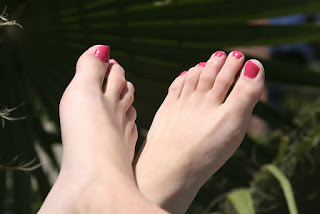2016 is right around the corner. Start the New Year off
right by taking special care of your feet. According to the American Podiatric
Medical Association, foot disorders are among the most widespread and neglected
health problems affecting people in the US. Maybe you have been ignoring that
pain in your foot, maybe you have been meaning to make an appointment with a
podiatrist, or maybe your resolution this year is to make your health a
priority. Whatever it may be, it’s always a good time to take care of your
feet.
A podiatrist can:
- Diagnose and treat foot and ankle disorders
- Advise on how to prevent foot and ankle problems
- Perform surgeries to correct issues
Here are a few quick facts in caring for your feet:
- Do not ignore persistent foot pain - it is not normal.
- Inspect feet regularly and pay attention to changes - peeling, growths, moles, discoloration, etc.
- Wear properly fitting shoes and shoes that are appropriate for what you are doing.
- If you suspect something is wrong, consult a physician. Home remedies can only go so far and may cause more problems in some situations.
Image by OUCHcharley. Poised. (2009). Flickr.
























